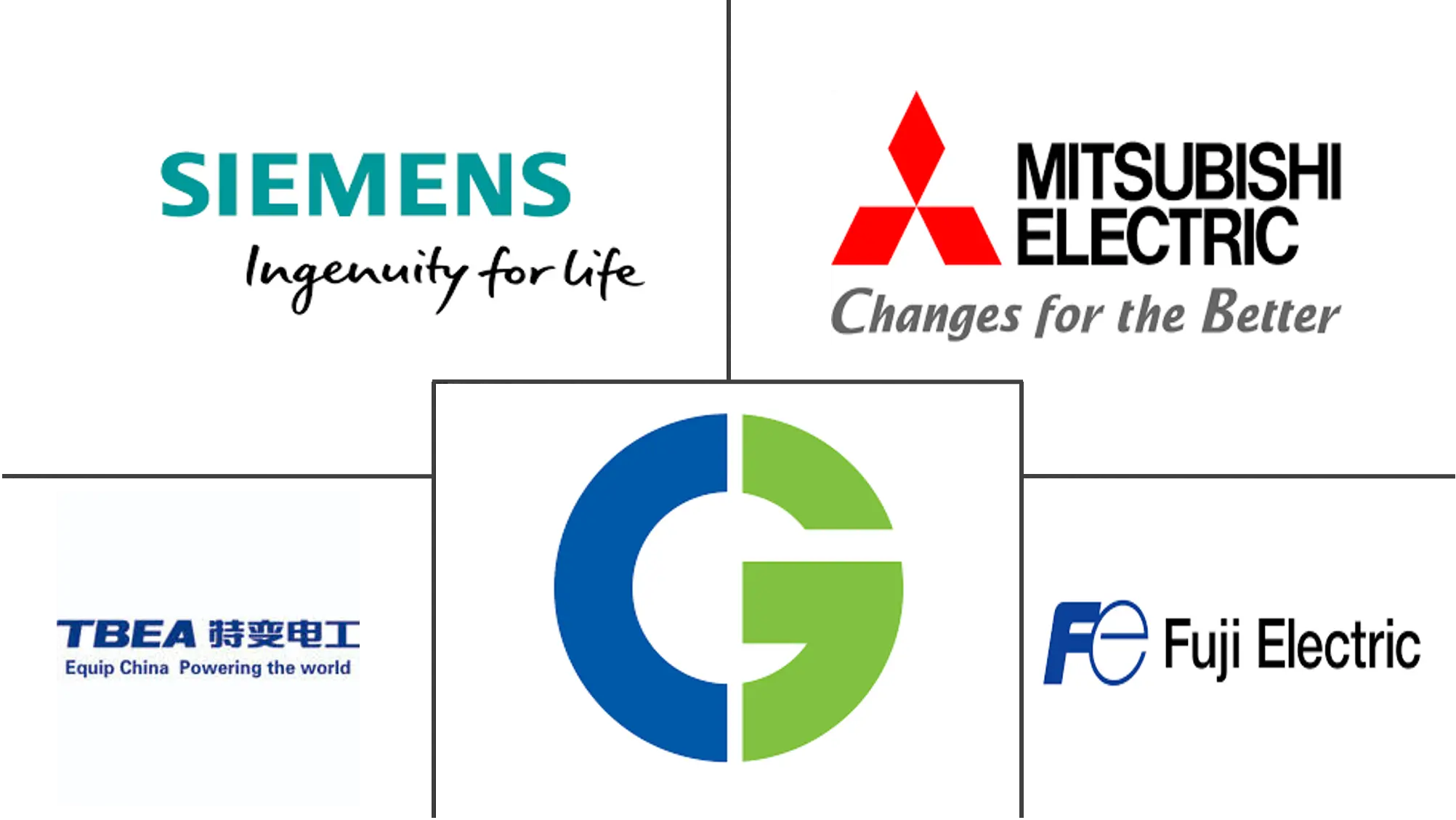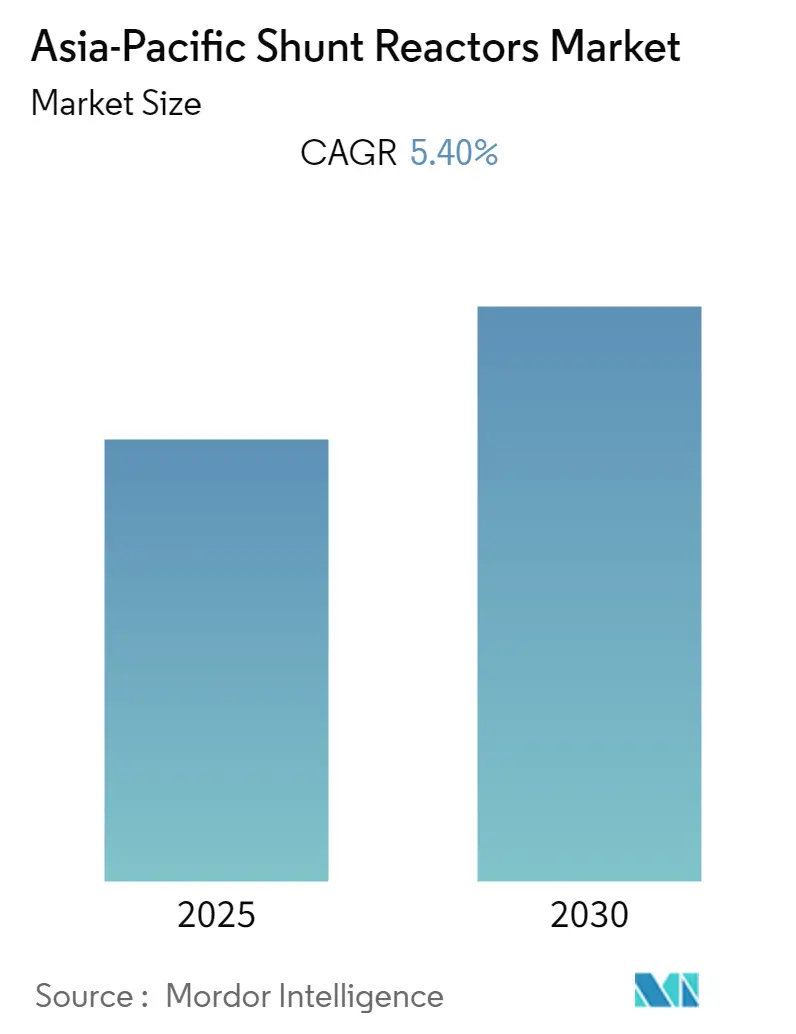
Asia-Pacific Shunt Reactors Market Analysis by Mordor Intelligence
The Asia-Pacific Shunt Reactors Market is expected to register a CAGR of 5.4% during the forecast period.
- The rising demand for power will drive the demand for products, solutions, and services allied to the energy sector in the region. The shunt reactor demand for the energy and utility will grow significantly in the coming years amidst the growing electricity demand and connectivity projects undertaken by the governments.
- The growing energy demand in the industrial sector is another prominent influencer behind the incorporation of shunt reactors in power generation facilities in the region. According to International Energy Agency's (IEA) 2019 report, the demand from the Asian gas industry is expected to rise by more than 10% over the next five years, reaching up to 4.3 trillion cubic meters in 2024.
- Moreover, China's largest utility state grid, which provides 90% of China's Electricity, is planning to integrate IoT technologies with national power grids. It has outlined 57 construction tasks and 25 demonstration projects to advance the plan, which is expected to be finished by 2024.
- The region is home to some of the major vendors that form alliances and partnerships with the local power suppliers, industrial projects, and government bodies. Some of the key players include Siemens, Fuji Electronic, ABB Ltd, and Hyosung Corporation.
- Also, the growing demand for renewable sources of power generation has led to the various power projects across the region, providing a boost to the shunt reactors market. For instance, Japan invested USD 2.75 billion to power the Fukushima region with 100% renewable energy by 2040.
- Owing to such developments, governments and private firms operating in the region are expected to undertake various projects to update their existing power distribution and transmission infrastructure.
Asia-Pacific Shunt Reactors Market Trends and Insights
Increasing Need for Modernization of Transmission and Distribution Networks
- Public policies, economics, and technological changes are driving the accelerated rate of change in the electric power system in the Asia-Pacific region. Transformational technologies like distributed energy resources (DER) and renewables will definitely be able to use the abilities of autonomous technology as their penetration increases. Grid modernization is being needed in the power grid to accommodate all the rapid technological changes happening in the generation, transmission and distribution of electric power.
- The global energy efficiency plans have been initiated by most of the governments across the globe to satisfy international regulations by setting up energy plants to harness renewable sources of energy, such as solar and wind. This is putting new requirements for transmission and distribution networks. The global shunt reactor market is deposing the cascading impacts of these developments.
- Non-carbon technologies, hydro and nuclear, still produce about 27% of electricity but no new plants are being constructed, for various reasons, and cannot be counted on to be part of the future solution to greenhouse gas reduction. So in 2019, there will be a continuing focus on increasing solar and wind installations.
- The battery technology continues to make steady progress both in technical performance and cost but despite the vast expenditures in R&D, especially in the electric vehicle (EV) sector, major breakthroughs have not happened to dramatically change the cost-benefit ratio.
- For developing countries like China and India, load growth is expected to be high, so revenues can be expected to rise to offset new investment, but keeping up with the load growth means that India and China cannot start ramping down on greenhouse gases until the 2030s, even though they will also be building renewable energy sources faster than all other countries.
- The other determinant that will play a significant role in the flourishing demand for shunt reactor in Asia-Pacific region is the evolution of IoT and smart grid projects. Deployment of latest technology platform-enabled infrastructure has resulted in the development of smart grids, particularly in advanced countries.
- Thus the motivations, opportunities and obstacles in modernizing the grid will vary widely across the globe, resulting in not just different cost structures but also energy policies, grid regulations and R&D expenditures.
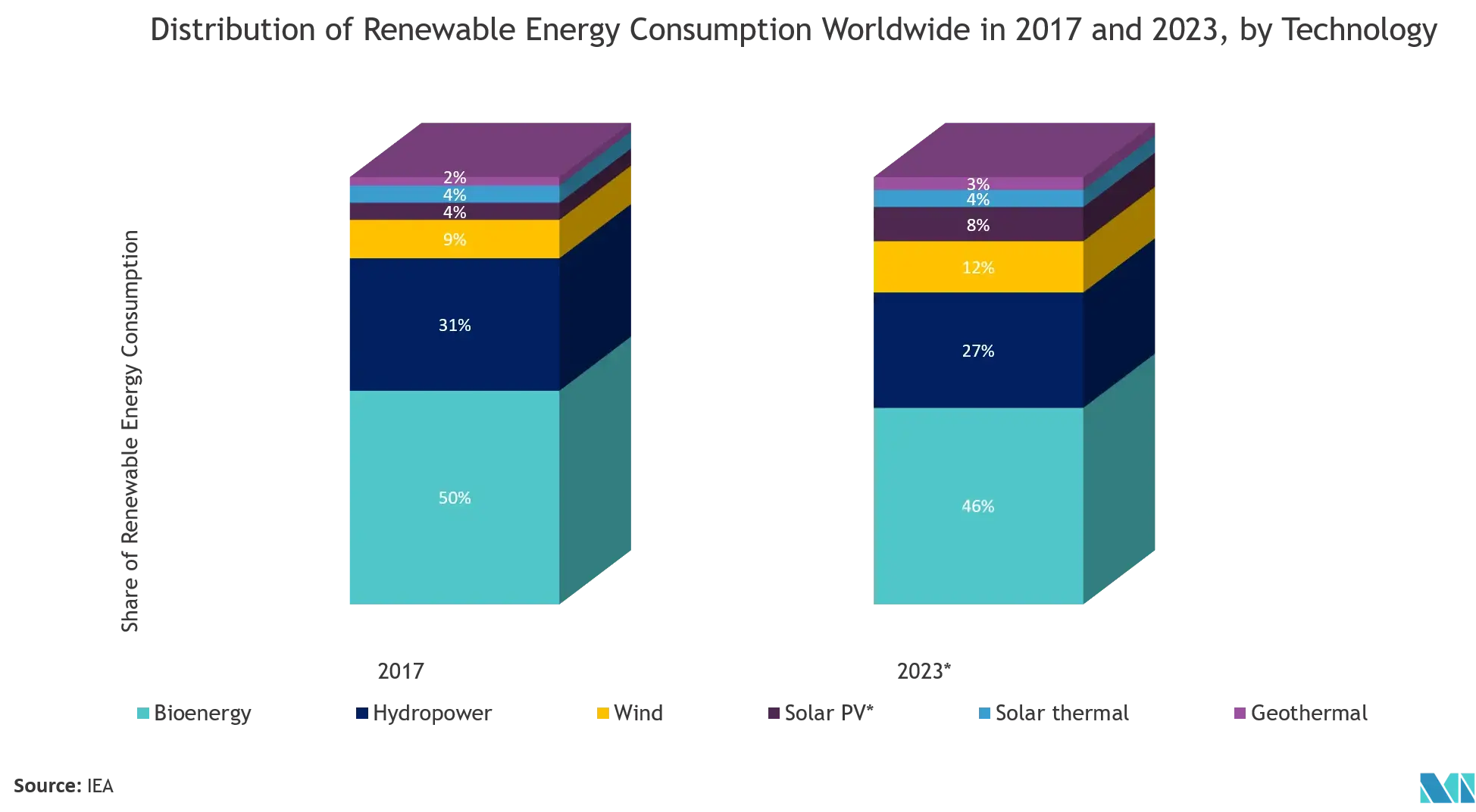
India Holds a Dominant Share of Asia-Pacific Shunt Reactors Market
- India is one of the primary countries in the Asia-Pacific region, and it is home to various manufacturing industries, whose energy needs are increasing rapidly. According to the International Energy Outlook report by EIA 2019, India’s industrial energy consumption is expected to nearly triple by 2050, growing from 16 quadrillion British thermal units (Btu) in 2018 to 47 quadrillion Btu by 2050, at an average annual rate of 3.4%.
- Moreover, the country is observing significant investments in the expansion and upgradation of its existing transmission and distribution network. For instance, according to the Ministry of Power, India, the electricity generated in India increased from 922.3 billion kilowatt-hours in 2016 to 1050.3 billion kilowatt-hours in 2019.
- The country is also witnessing significant transmission losses due to technical losses and commercial losses, forcing the government to launch the Restructured Accelerated Power Development and Reforms Programme (R-APDRP). To reduce technical losses, the government has introduced shunt and series compensation systems in long transmission lines at an appropriate location.
- Further, the country is witnessing significant acquisition of electricity transmission lines, which is also driving the shunt reactor market in the country. In January 2020, Indigrid acquired East-North Interconnection Company Ltd Transmission Company Limited (ENICL), at a value of USD 145.7 million, from Sterlite Power Transmission Ltd.
- The companies in India are also expanding their footprints into other country by taking projects and partnering with other local players. For instance, India-based Larsen & Toubro Limited (L&T) Company signed the contract for the 380kV Hybrid Gas Insulated Switchgear and reactors project in the northern region of the Kingdom of Saudi Arabia.
- The electricity requirement from industrial and commercial consumers in India has decreased significantly while the residential demand is supposed to have grown. The immediate impacts of COVID-19 on the Indian power sector are becoming evident.
- According to the Power System Operation Corporation of India (POSOCO), The energy met on March 16th, 2020 – which can be viewed as a business-as-usual scenario – was 3494 MU as compared to 3113 MU on March 23rd, 2020 a day of voluntary curfew. It further decreased to a spectrum between 2600-2800 MU between March 25th to March 31st, 2020.
- According to ICRA, the lockdown imposed by the government in the region is likely to adversely impact the all India electricity demand, with demand expected to decline by about 20-25% on a year-on-year basis during the period of lockdown.
- Average monthly thermal PLF would further dip to 50-52% against 63% in the corresponding period of the previous year, due to a considerable drop in demand and consequently, power generation companies especially those without any long-term PPAs would be adversely impacted given the weakening of the power tariffs in the short-term / power exchange market.
- Apart from that, COVID-19 is expected to have a significant impact on India’s stressed private power sector, with distribution companies halting payments to generation companies as state electricity departments are not taking coercive action to recover money from consumers.
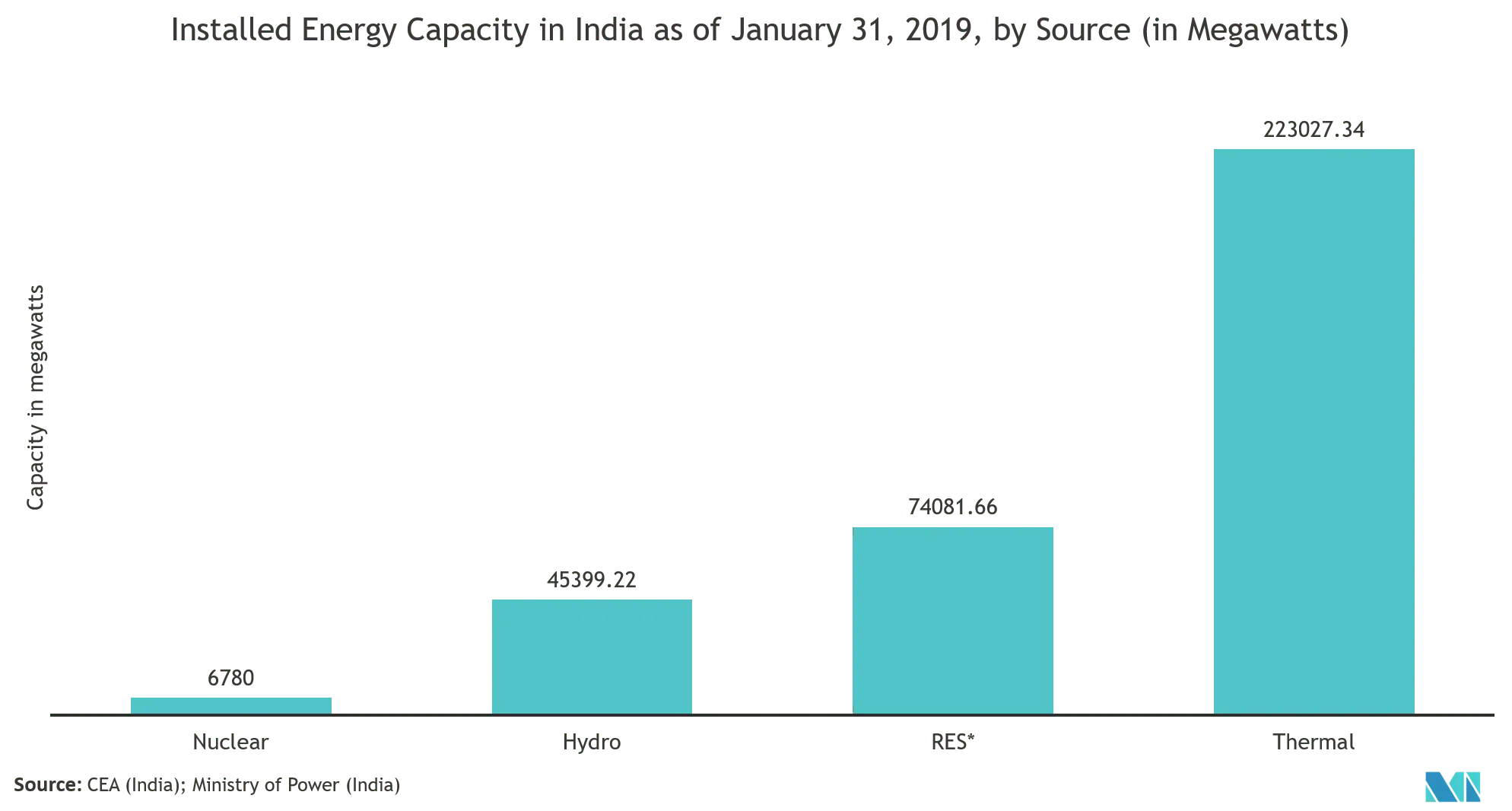
Competitive Landscape
The Asia-Pacific Shunt Reactors Market is moderately competitive and consists of a few major players. In terms of market share, few of these major players presently dominate the market. These major players with a notable share in the market are concentrating on increasing their customer base across different countries. These firms are leveraging on strategic collaborative drives to enhance their market share hence, profitability. Nevertheless, with technological progress and product innovations, micro to medium companies are strengthening their market ubiquity by ensuring new settlements and by tapping new businesses and markets.
- February 2020 - Siemens bought a large stake in the Gamesa wind turbine unit. The company will be part of the new energy spinoff. Siemens acquired a major stake in the company for EUR 1.1 billion.
- November 2019 - PT CG Power Systems Indonesia (CG Indonesia), a step-down subsidiary of CG Power and Industrial Solutions Limited, has bagged an order from Indonesian state utility PT PLN (Persero) for manufacture and supply of 25 units' Power Transformers valued at IDR 334 billion (USD 24 million).
Asia-Pacific Shunt Reactors Industry Leaders
-
Siemens AG
-
CG Power and Industrial Solutions Limited
-
Mitsubishi Electric Corporation
-
Fuji Electric Co.
-
TBEA Co. Ltd
- *Disclaimer: Major Players sorted in no particular order
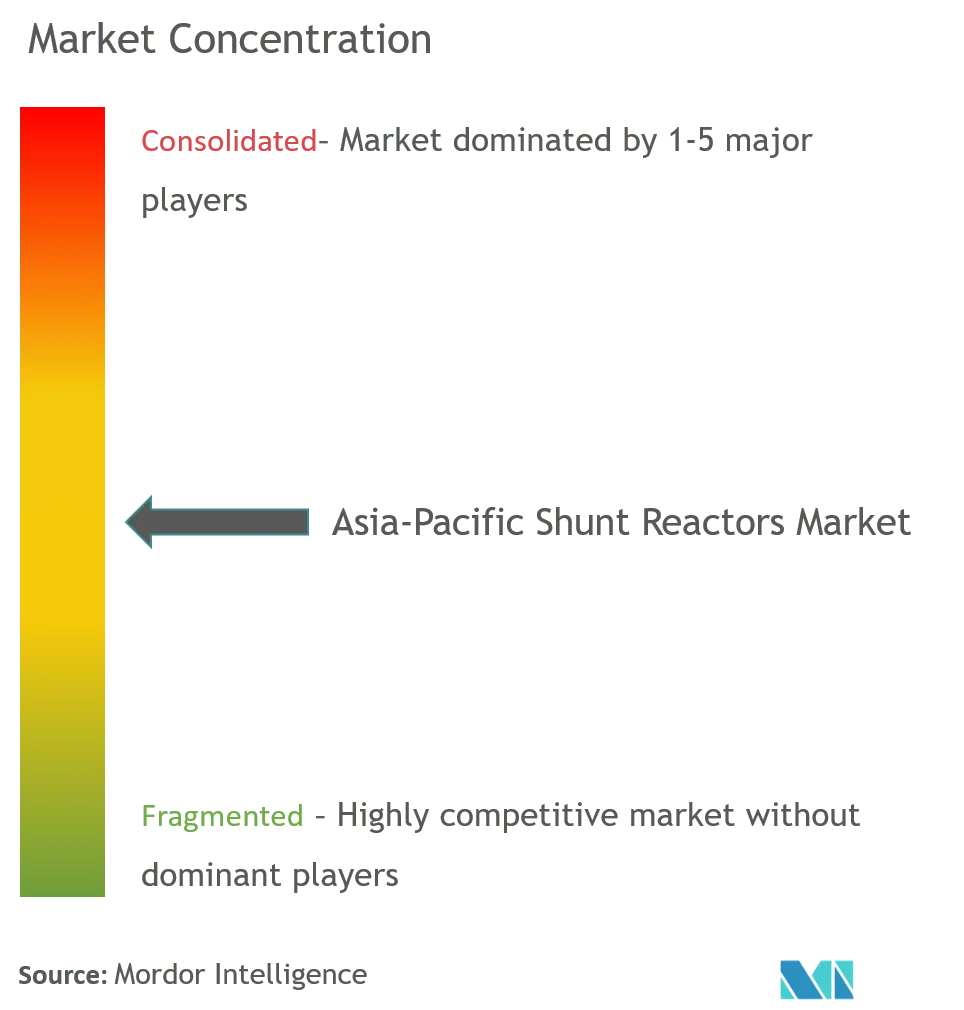
Asia-Pacific Shunt Reactors Market Report Scope
A shunt reactor is a compact device that basically absorbs reactive power, boosting the energy efficiency of the system. Reactive power is the contributor to added load across power transmission systems. Shunt reactors are commonly used for reactive power compensation in long high-voltage transmission lines and in cable systems. Shunt reactors are normally connected to substation bus-bar, often directly to the overhead transmission lines.
| Oil Immersed Reactor |
| Air Core Dry Reactor |
| Electric Utilities |
| Industrial Utilities |
| China |
| India |
| Japan |
| Rest of Asia-Pacific (South Korea, Australia, Singapore, Thailand, and Other Countries) |
| Type | Oil Immersed Reactor |
| Air Core Dry Reactor | |
| Application | Electric Utilities |
| Industrial Utilities | |
| Country | China |
| India | |
| Japan | |
| Rest of Asia-Pacific (South Korea, Australia, Singapore, Thailand, and Other Countries) |
Key Questions Answered in the Report
What is the current Asia-Pacific Shunt Reactors Market size?
The Asia-Pacific Shunt Reactors Market is projected to register a CAGR of 5.4% during the forecast period (2025-2030)
Who are the key players in Asia-Pacific Shunt Reactors Market?
Siemens AG, CG Power and Industrial Solutions Limited, Mitsubishi Electric Corporation, Fuji Electric Co. and TBEA Co. Ltd are the major companies operating in the Asia-Pacific Shunt Reactors Market.
What years does this Asia-Pacific Shunt Reactors Market cover?
The report covers the Asia-Pacific Shunt Reactors Market historical market size for years: 2019, 2020, 2021, 2022, 2023 and 2024. The report also forecasts the Asia-Pacific Shunt Reactors Market size for years: 2025, 2026, 2027, 2028, 2029 and 2030.
Page last updated on:
Asia-Pacific Shunt Reactors Market Report
Statistics for the 2025 Asia-Pacific Shunt Reactors market share, size and revenue growth rate, created by Mordor Intelligence™ Industry Reports. Asia-Pacific Shunt Reactors analysis includes a market forecast outlook for 2025 to 2030 and historical overview. Get a sample of this industry analysis as a free report PDF download.
